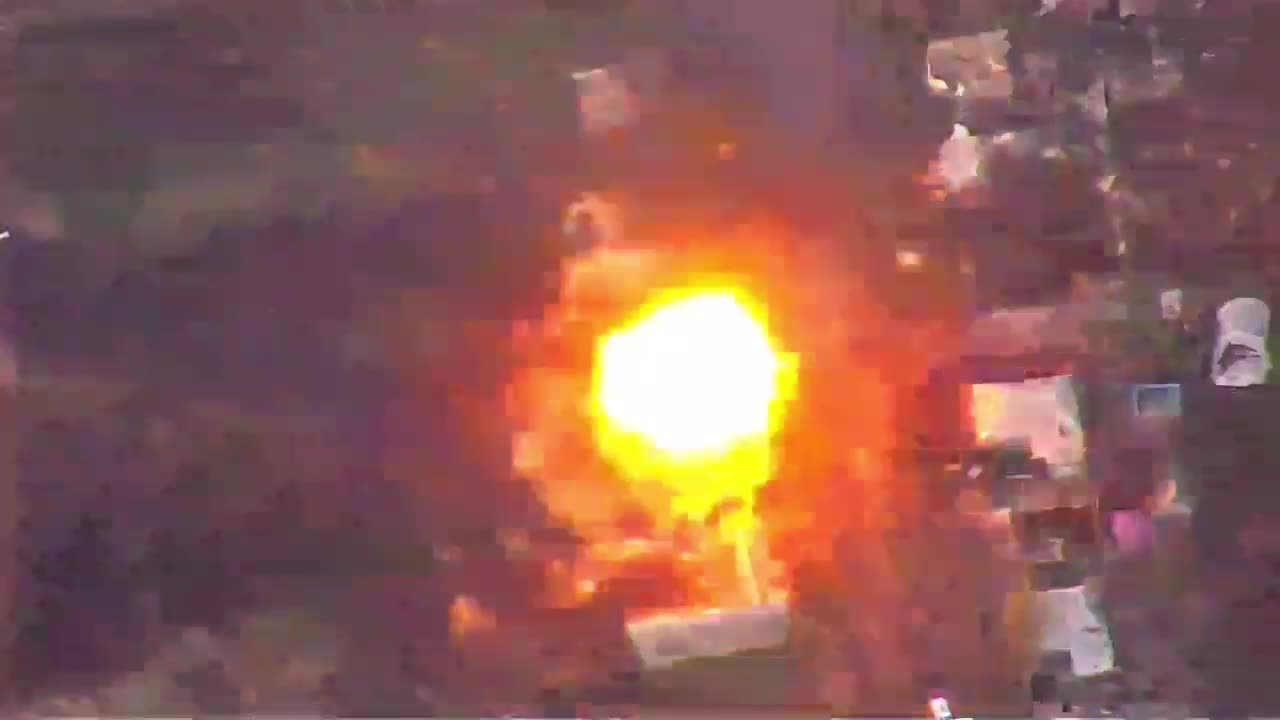Mirror: https://files.catbox.moe/b10y05.mp4
Source: https://t.me/AFUStratCom/20860
Translation:
☠️ The tactical group of the SSO “Medoids” of the 3rd separate regiment of the SpP named after Prince Svyatoslav Khorobroy destroyed the R-934 EW equipment of the occupiers in the area of the temporarily occupied n.p. Svitlodarsk
@AFUStratCom
Оператори 🐺 ССО скоригували вогонь HIMARS/M270 по російському комплексу РЕБ типу Р-934 в районі н.п. Світлодарськ, Донецька область.
🐺 SOF operators corrected HIMARS/M270 fire at a russian R-934 electronic warfare system near Svitlodarsk, Donetsk region.



That looks like imagery from a fixed wing drone. It’s probably taking those pictures from miles away outside of the area effect of the system.
The interference signal is also a “Here I am look at me” signal can be triangulated back to the source easily. So they have to keep it off most of the time and relocate quickly between uses.
Forgive my ignorance, but arent these meant to block aircraft comms and radar? So shouldnt it have a very large area of effect? I had assumed it would have an effective range well beyond visible range. Your second point does seem more plausible to me, but i know nothing of what these tools are meant to acheive.
Edit: https://www.ausairpower.net/APA-REB-Systems.html
Seems that the R934 is only concerned with blocking UHF/VHF, so might not even be equiped to detect the drone?
I am not an expert but this is how I understand it.
Originally they were designed to stop radar. They do this by detecting and broadcasting the same frequency and pattern back to the source. This can confuse the radar system that relies on bounced back signals from hard objects. Radar can work for more than 100 miles detecting very faint bounced back signals.
Newer ones (like the one destroyed) are designed to jam cell phone signals etc. This gets a bit more complicated. These are two way signals with both sources producing and receiving signals. Military ones are also encrypted to reduce jammers spoofing their signals. These types of jammers rely on producing lots of noise in the key frequencies that overpowers and masks the communication signals. Since radio signals follow the inverse-square law the jammers effective range is limited. For example an effective interference signal at 2 miles away from the source will be reduced by 75% at 4 miles away and likely be ineffective.